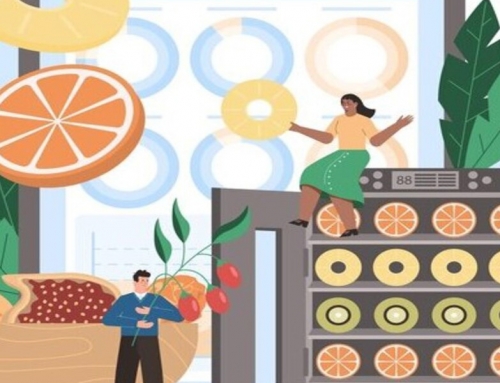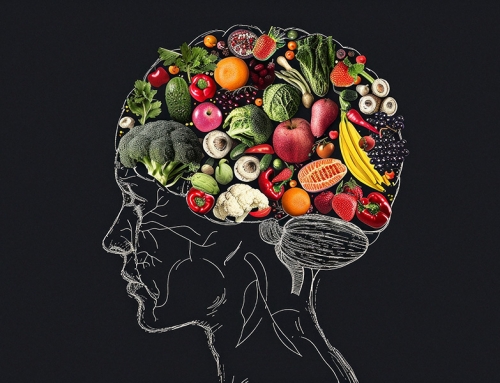Nutrition security is one of the leading nutrition and health concerns in India. There is an increasing need to understand that nutrition at the individual and population levels depends on a lot of internal and external factors. Environment, nutrition, water availability, disease, and social and political circumstances are just a few of the factors that influence a population’s health 1.
The United Nations Committee on World Food Security defines food security as everyone having constant physical, social, and economic access to enough, safe, and nourishing food that meets their dietary needs and food preferences for an active and healthy life11. By taking into account the nutritional content of food and the systemic aspects that affect a person’s nutritional condition, nutrition security extends beyond food security. It’s not just about calories; it’s about a community’s access to vital nutrients2.
On the other hand, health and well-being are not merely the absence of disease; they also refer to complete physical, mental, and social well-being and a balanced and nutritious diet are crucial to the development of good health1. Lack of nutrition security can also lead to a lack of proper access to nutritious food for the growing population13.
Nutrition Security in India and globally
Out of 121 nations, India ranks 107th in the 2022 Global Hunger Index, indicating a severe level of hunger, with a score of 29.14. This highlights the states of nutritional security in India, where there is very little equal access to food for all the people. The Government of India also launched the National Food Security Act in 2013, stating that all people globally should get equal access to food to live a healthy life characterized by availability, accessibility, utilization, and stability5. Additionally the Government of India also launched a targeted Public Distribution System in 1997, leading to the classification of people into three categories: below the poverty line, above the poverty line, and poorest of the poor3.
However, in the US, 10.5% of households were said to be food insecure, and this effect was largely due to the pandemic. The US government pays special attention to nutrition security so that the whole population gets equal access to food. The US government is addressing food security in four ways: by adjusting SNAP (Supplemental Nutrition Assistance Program) benefits, updating school nutrition standards, revising the WIC (women, infants, and children) food packages, and promoting nutrition education2.
The Relationship Between Nutritional Security and Behavior
Many diet surveys have shown that the Indian diet is micronutrient deficient, and there is no proper availability of food for all. This leads to improper dietary behaviors, research has shown that this is most common in ethnic and racial minorities who have poor income and poor education6. Nutritional insecurity is also associated with binge eating, leading to the behavior of overeating7 and this can be addressed by increasing education, working on psychological aspects, improving people’s skills, and changing attitudes towards eating foods rich in nutrients6.
Relation between Nutrition security and Mental health
Nutrient-rich healthy eating affects the mental well-being of individuals as compared to unhealthy eating, the relationship between nutritional security and mental health is of great concern12. Depression and anxiety are the two most common mental health problems that are often seen to be associated with either increased or decreased intake of food, which is an important consideration in relation to nutritional insecurity 8,12. The poor mental health of both parents can also lead to a lack of nutritious diet intake, leading to malnutrition in children as well8. Covid -19 also made people with lower income families more vulnerable to mental disorders due to food insecurity9.
Food system approaches in relation to nutritional security and healthy well being
A food system that includes the processing, production, preparation, and consumption of food can improve nutrition security. This approach involves the inclusion of food supplements, increasing the supply, making it affordable, and educating consumers about their appropriate use of it10.
It also involves the storage and reserve of grain, the use of nutrition informatics, and following the NFS Act, which leads to stability of nutritional security and healthy well-being in India10.
Many government policies will be included in this food system approach, like the promotion of home and school gardens, food and agricultural policies to increase affordability and accessibility, Regulation and taxation, food assistance programs, and many more10.
Conclusion
The focus on nutrition security will help in the improvement of quality care and well-being, however, to achieve that public health and healthcare policy actions are needed to support nutrition security. It is imperative for policymakers to focus on implementing effective strategies to improve nutrition security, including promoting home and school gardens, increasing the affordability and accessibility of nutritious food, and regulating and taxing food. By improving nutrition security we can reduce the hunger index of India and provide access to food and a healthy diet to those who suffer from malnutrition and promote the healthy development of children and low-income individuals.
References
- Tapsell, L. C., Neale, E. P., Satija, A., Hu, F. B., &. (2009). Foods, nutrients, and dietary patterns: Interconnections and implications for dietary guidelines. Asia Pacific Journal of Clinical Nutrition, 18(4), 684-688. //apjcn.nhri.org.tw/server/APJCN/18/4/684.pdf
- Freeland-Graves, J. H., & Nitzke, S. (2013). Position of the Academy of Nutrition and Dietetics: Total diet approach to healthy eating. Journal of the Academy of Nutrition and Dietetics, 113(2), 307-317. //www.tc.columbia.edu/tisch/blog/news/nutrition-security-vs-food-security-whats-the-difference/
- Avula, R., Menon, P., & Saha, K. K. (2016). A lifecycle approach to food and nutrition security in India. Public Health Nutrition, 19(1), 7-13. //www.cambridge.org/core/journals/public-health-nutrition/article/lifecycle-approach-to-food-and-nutrition-security-in-india/3EBCB80FC05420605125E9ADBA9CB816
- International Food Policy Research Institute. (2021). India. Global Hunger Index. //www.globalhungerindex.org/india.html
- National Food Security Act. (2013). Ministry of Consumer Affairs, Food & Public Distribution, Government of India. //nfsa.gov.in/portal/nfsa-act
- Yeh C-W, Lo Y-TC, Chen Y-C, Chen W-C, Huang Y-C. Perceived Food Insecurity, Dietary Quality, and Unfavorable Food Intake among Children and Adolescents from Economically Disadvantaged Households. Nutrients. 2021; 13(10):3411. //doi.org/10.3390/nu13103411
- Khanna, R., & Mhaskar, D. (2015). An overview of behavior change interventions to address food insecurity. Nutrition Informatics, 4(1), 1-8. //nutritioninformatics.info/an-overview-of-behaviour-change-interventions-to-address-food-insecurity/
- Chakraborty, S., & Venkatesan, R. (2022). A network-based approach to explore the dynamics of food security. Nature Communications, 13, 1125. //www.nature.com/articles/s41467-022-32116-3
- Morshed, N., Lyles, C. R., Rahman, M., Rahman, T., & Feroze, A. (2021). Awareness and practices related to food safety and foodborne illnesses in a low-income urban community in Dhaka, Bangladesh. BMC Public Health, 21, 886. //doi.org/10.1186/s12889-021-10631-0
- Biesalski, H. K. (2013). Nutrition meets the microbiome: Micronutrients and the microbiota. Annals of the New York Academy of Sciences, 1290(1), 1-12. //www.nutri-facts.org/content/dam/nutrifacts/media/media-books/RTGN_chapter_02.pdf
- International Food Policy Research Institute. (n.d.). Food security. //web.archive.org/web/20210428084756///www.ifpri.org/topic/food-security#:~:text=Food%20security,%20as%20defined%20by,an
- BMJ. (2020). COVID-19: India’s health system is on the brink of collapse. //www.bmj.com/content/369/bmj.m2382
- Food and Agriculture Organization of the United Nations. (n.d.). The state of food security and nutrition in the world. //www.fao.org/hunger/en/
Affiliation:
- Dean and Distinguished University Professor at School of Public Health, University of Memphis, TN, USA
- Foundation of Healthcare Technologies Society, New Delhi, India






Leave A Comment